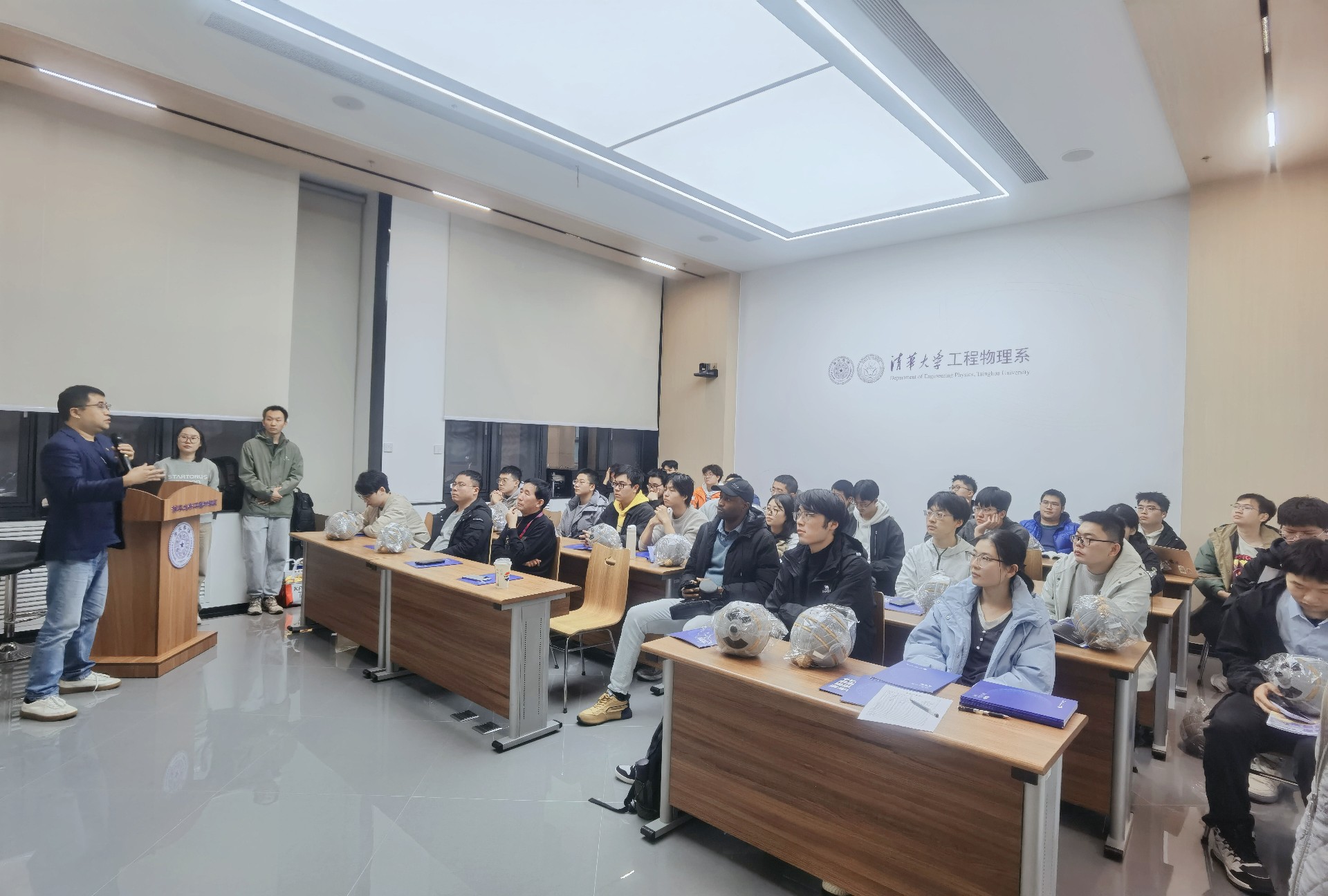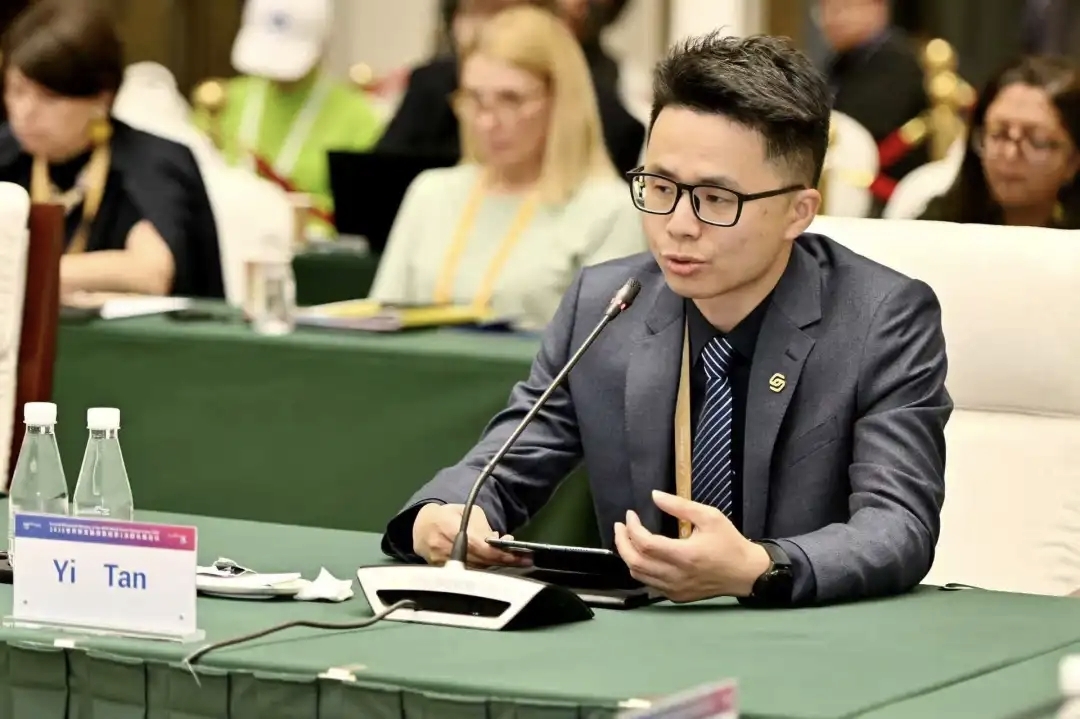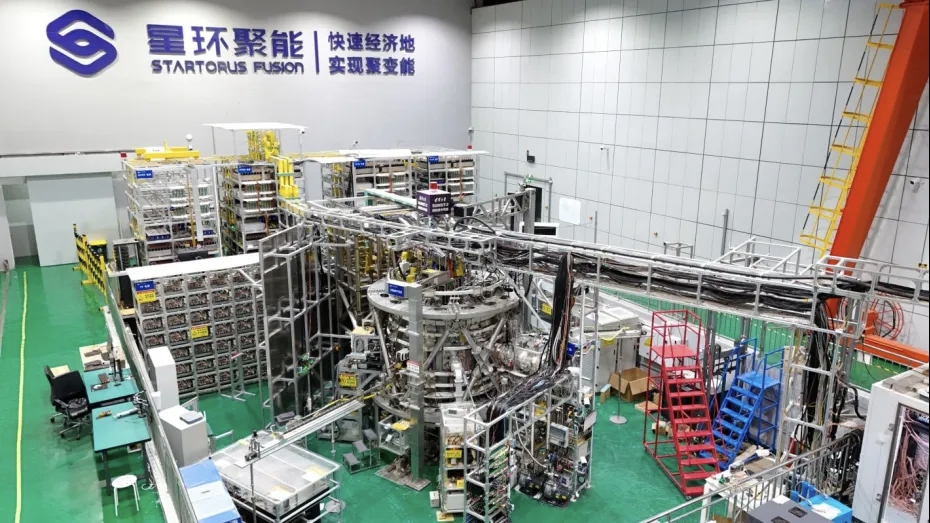
In the movie 'Avatar', humans discovered a rare room-temperature superconductor called Unobtanium on the planet Pandora. To obtain large quantities of this material, humans spared no effort and invaded Pandora.
Scientists claim to have found such a material, sparking intense discussions in the primary and secondary markets.
On the afternoon of March 8th, a screenshot regarding a breakthrough in room-temperature superconductivity went viral on social media. It was a presentation given at the March Meeting of the American Physical Society by Ranga Dias from the University of Rochester, titled 'Observation of Room-temperature Superconductivity in Hydride at Near Ambient Pressure.' The team announced the achievement of room-temperature superconductivity under near-ambient pressure conditions.
Did Ranga Dias' team really capture the "pearl of contemporary science" - superconducting materials just like this?
How Difficult is It to Achieve Room Temperature at Near Ambient Pressure Superconductivity?
First, let's take a look at what happened at the American Physical Society's event.
According to the circulating on-site presentation slides, Ranga Dias' team discovered that ternary or higher-order systems could be the key to achieving high-temperature superconductivity under near-ambient pressure conditions. According to the circulating on-site presentation slides, Ranga Dias' team has discovered that ternary or higher-order systems could be the key to achieving high-temperature superconductivity under near-ambient pressure conditions. They showcased a ternary system consisting of lutetium nitride-hydride, which exhibited superconducting properties at 294K (approximately 21 degrees Celsius) and 1GPa (approximately 10,000 atmospheres) of pressure.
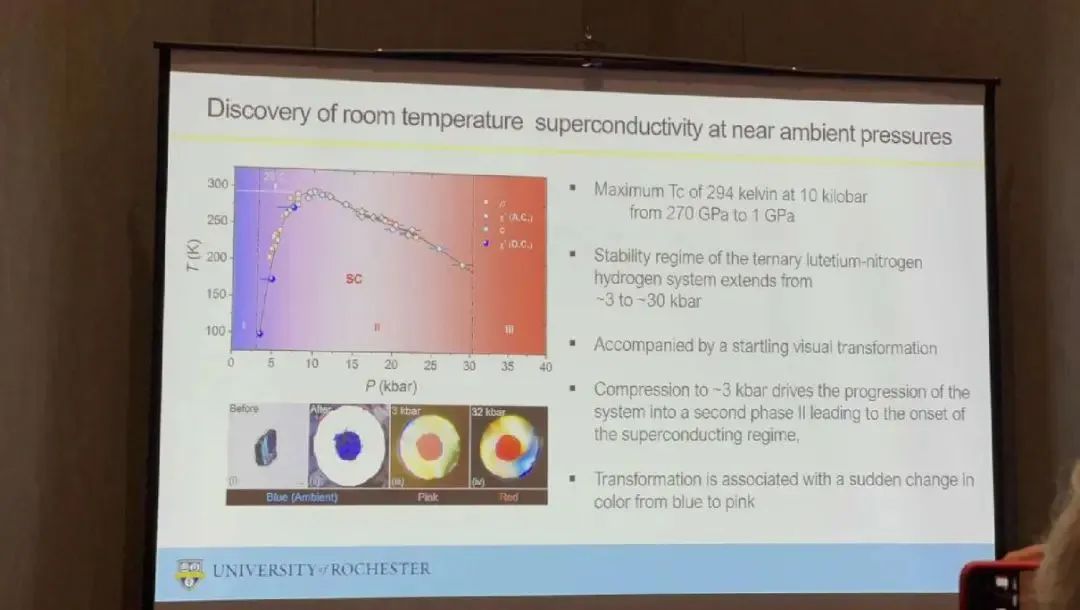
Ranga Dias further verified the superconducting properties of the material through resistance testing and the Meissner effect.
The Meissner effect, also known as perfect diamagnetism, is the phenomenon where a superconductor expels magnetic fields when transitioning from its normal state to the superconducting state. In simple terms, when a superconducting material is placed on a magnet, the Meissner effect causes the magnetic field to distort, creating an upward force that enables the superconductor to levitate above the magnet. This effect serves as the theoretical foundation for the functioning of magnetic levitation trains.
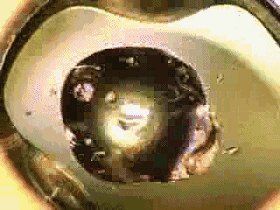
△Magnetized Water
Ranga Dias graduated from Washington State University in 2013 and has been actively involved in researching quantum phenomena in hydrogen compounds under extreme conditions. As early as 2020, his team published an article in the journal Nature, claiming to have achieved superconductivity in a carbon-sulfur-hydrogen compound with a transition temperature of 15°C under an ultra-high pressure of 267 GPa. This research was hailed as a Nobel-level achievement at the time. However, due to the inability of other physicists to replicate the experimental results, the article was retracted in September 2022.
It is surprising that within a mere six months, Dias returned to the physics community with even more groundbreaking research findings.
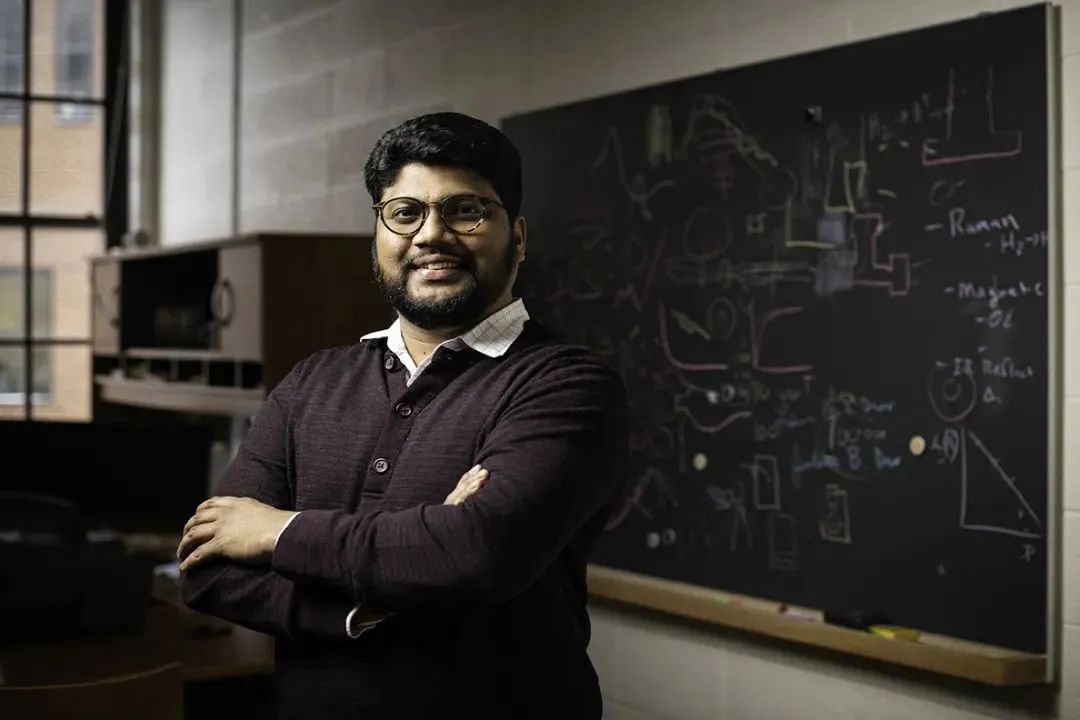
△Ranga Dias | Image source: Internet
His research is so important because achieving superconductivity at room temperature at near ambient pressure is extremely challenging.
As we know, superconductivity refers to the state in which a conductor exhibits zero electrical resistance under certain conditions. However, scientists have been racking their brains for the past century to achieve this "certain condition."
Since Dutch scientist Heike Kamerlingh Onnes observed the superconducting behavior of mercury at temperatures below -269 degrees Celsius in 1911, the pursuit of "how to achieve superconductivity under normal conditions" has long been a goal in the scientific community.
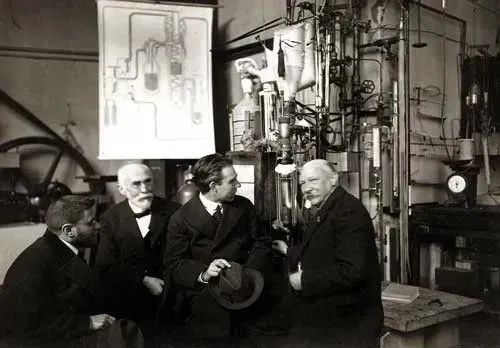
△Heike Kamerlingh Onnes (on the right) | Image source: Internet
In the past decade, scientists have focused their exploration of high-temperature superconductivity in the field of high pressure, achieving superconductivity through chemically pre-compressed hydrogen alloys. Before Ranga Dias' breakthrough, the highest-temperature superconductor known was hydrogen sulfide, which required temperatures of around 203K (approximately -70°C) and pressures of 150GPa (approximately 1.5 million atmospheres) to exhibit superconductivity.
Ranga Dias' discovery of the lutetium nitride-hydride system achieving superconductivity at approximately 21°C and 10,000 atmospheres of pressure demonstrates the groundbreaking nature of his achievement. However, a significant gap exists between 10,000 atmospheres and "ambient pressure" in practical applications. According to Mi Lei, founding partner of CASSTAR, "High-temperature, high-pressure superconductivity and room-temperature, ambient-pressure superconductivity are different research directions in the field. But achieving superconductivity at room temperature at near ambient pressure would be truly remarkable."
In the investment field, high-temperature superconductivity projects have long been sought after by deep-tech investment institutions. This technology has garnered significant attention because of its potential to have a tremendous impact on future industries.
Superconducting materials have the potential to bring about significant changes in industries such as energy and power, transportation, and medical diagnostics.
When a superconducting material enters the superconducting state, it exhibits complete diamagnetism, expelling magnetic flux lines from its interior. When a magnet approaches a superconductor, it experiences strong repulsive forces. Mi Lei believes that this advancement can elevate humanity's control over electrons to a new level.
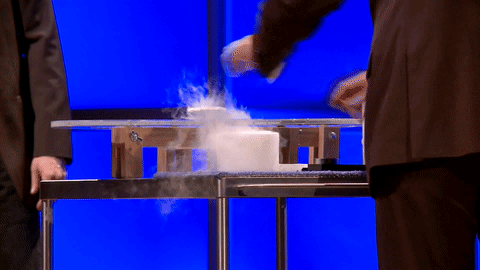
△Superconducting Experiment
In tokamak devices for magnetic confinement fusion, such as those used in magnetic fusion energy research, a magnetic cage is employed to confine the plasma at temperatures exceeding hundreds of millions of degrees Celsius. Existing tokamak experimental devices mostly use copper coil magnets with operation times measured in seconds. However, for commercial fusion reactors to achieve continuous and steady-state operation, superconducting magnets are necessary. The ITER (International Thermonuclear Experimental Reactor) project, currently the largest ongoing tokamak experimental device, utilizes mature low-temperature superconducting magnet technology developed in the late 20th century. It is a massive and highly funded international collaboration.
In recent years, high-temperature superconducting materials have started to mature. Their characteristics under strong magnetic fields far surpass those of low-temperature superconducting materials. High-temperature superconducting magnets can generate magnetic fields several times stronger than low-temperature superconducting magnets, providing stronger plasma confinement. This opens up the possibility of downsizing tokamaks, significantly reducing investment costs and greatly shortening development cycles. Previously, fusion projects were perceived as distant, requiring 30 to 50 years of development and significant investments. However, with the advancements in high-temperature superconducting materials, these projects are now seen as potential venture capital hotspots with an expected development timeline of around 10 years and manageable investments.
CASSTAR believes that once superconducting materials become widespread and applied, not only will humanity no longer be limited by energy scarcity, but society as a whole will benefit from improved production and quality of life. Achieving superconductivity at room temperature at near ambient pressure has long been a dream for humanity.
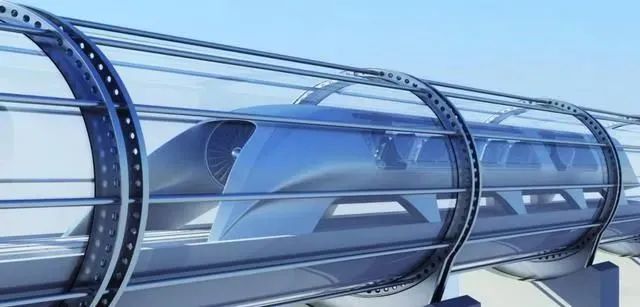
△Maglev Train Conceptual Design | Image source: Internet
The Prospects of Superconducting Materials
In Mi Lei's view, the value of superconducting technology may be no less than that of semiconductor materials. Chen Rui, CEO of the commercial controlled nuclear fusion company "Startorus Fusion", agrees with this and states, "Superconducting technology is highly important for nuclear fusion. A good superconducting material can significantly reduce the cost of achieving controlled nuclear fusion and greatly simplify the design of fusion reactors."
In summary, these accomplishments are closely tied to the well-established upstream superconducting materials industry. China's superconducting materials sector has steadily developed into a significant international force that cannot be overlooked.
In the field of low-temperature superconducting materials, driven by the ITER project, Western Superconductor Technologies (WST) has made relentless efforts and achieved international first-class status in low-temperature superconducting materials and low-temperature superconducting magnets. It has become the core supplier of superconducting materials for ITER fusion magnets. The maturity of low-temperature superconducting materials has driven the rapid development of domestic industries such as magnetic resonance imaging and particle accelerators. In recent years, there have also been achievements in areas such as maglev trains and superconducting energy storage.
In recent years, significant breakthroughs have been made in the international ReBCO high-temperature superconducting materials, leading to large-scale production. Its excellent high-field characteristics have sparked a new compact tokamak fusion route in the fusion field using high-temperature superconducting magnets. The 10-year roadmap for fusion has stimulated great entrepreneurial and investment enthusiasm in this field.
"Currently, there are over 20 controlled nuclear fusion startup companies worldwide," Said Mi Lei, who has been leading CASSTAR's dedicated efforts in high-temperature superconducting materials since last year. "We have already invested in three high-temperature superconducting material companies, covering both upstream and downstream sectors. However, we did not anticipate such rapid popularity and growth in this field."
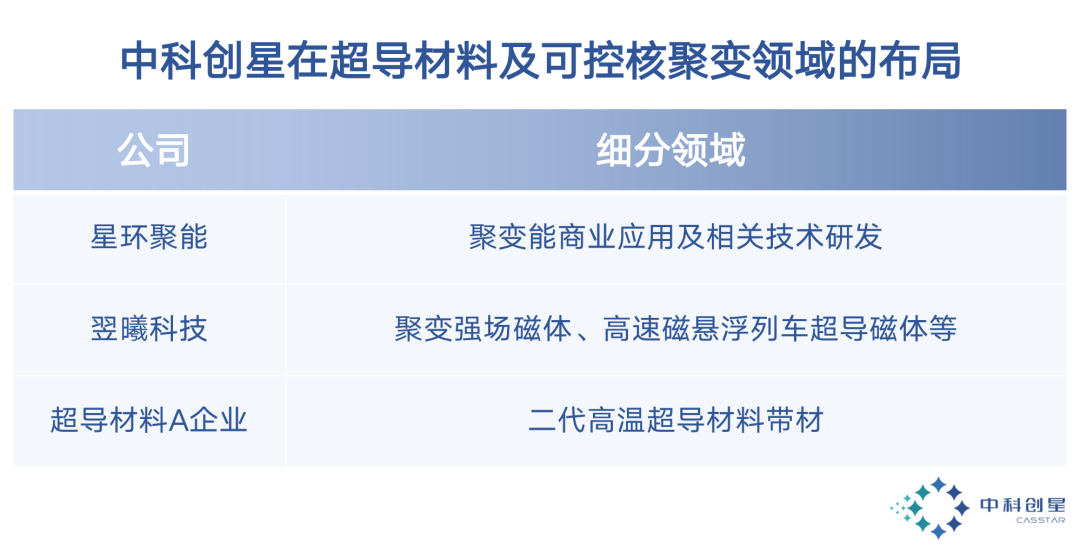
"Startorus Fusion" is the first risk-driven commercial fusion energy development company in China. The company focuses on the design, construction, operation, and research and development of compact, commercialized, and rapidly iterative controlled fusion energy devices. In the second half of 2022, Startorus Fusion completed the installation of the proof-of-principle device, the SUNIST-2 spherical tokamak mainframe. The development of the pulse power supply, which is coordinated with the magnets, has also progressed smoothly, and discharge experiments are about to be attempted.
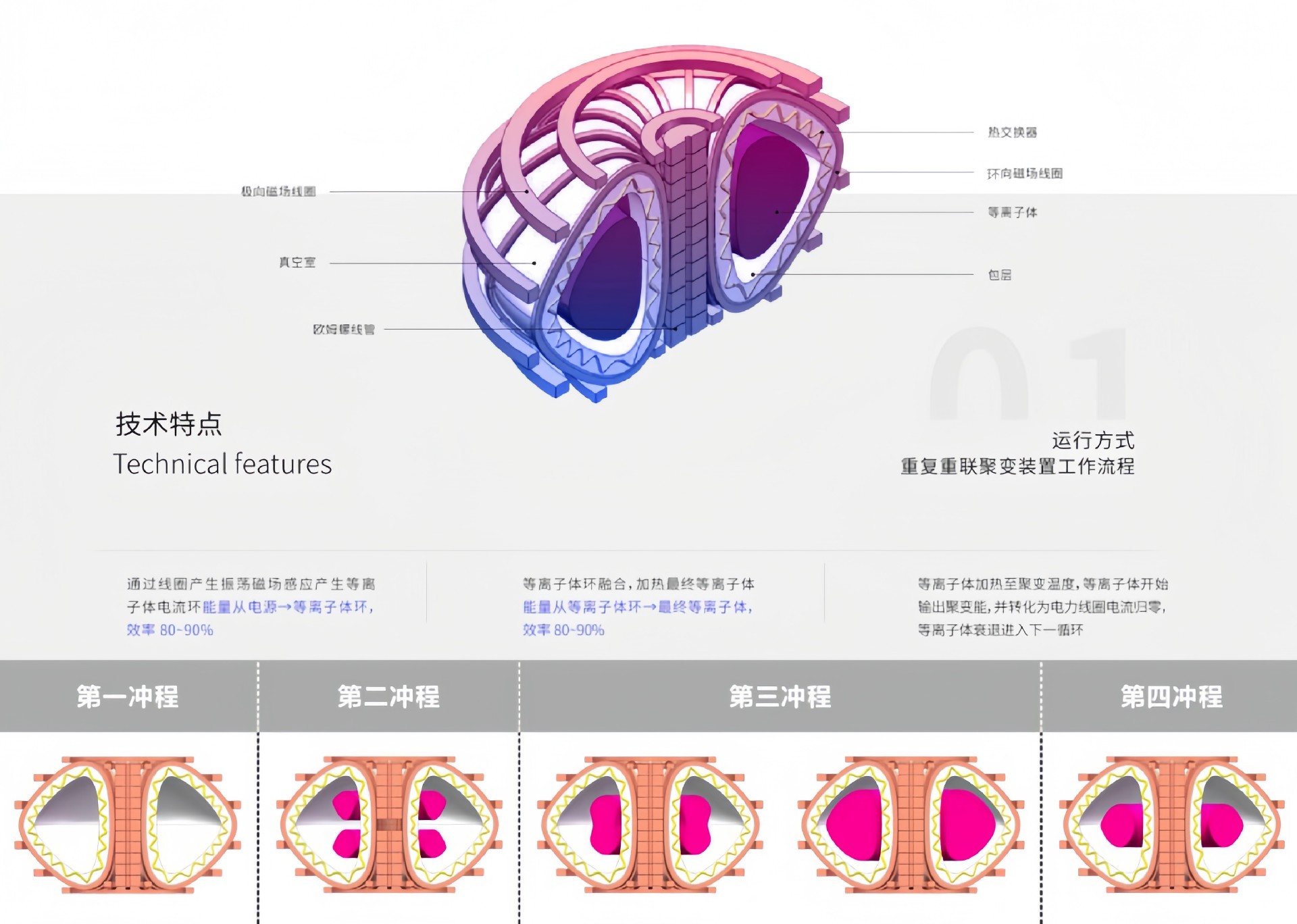
△Startorus Fusion’s Controlled Nuclear Fusion Device Schematic
According to Chen Rui, the goal of this device is to verify the company's repetitive-reconnection controlled fusion scheme. In the future, the company plans to build a "Prototype Device". If the Prototype Device operates smoothly, the construction of a commercial demonstration device is expected to begin in 2026. The objective of the commercial demonstration device is to demonstrate the entire process of fusion power generation.
Shanghai Yixi Technology is a company engaged in the research and development of high-temperature superconducting magnets. The company focuses on the development of fusion high-field magnets based on the existing ReBCO high-temperature superconducting materials. This component is the most crucial for achieving compact tokamak devices. "In the R&D budget of billions of yuan for SPARC, it is estimated that 50% will be allocated to high-temperature superconducting magnets," said Jin Zhijian, a tenured professor at Shanghai Jiao Tong University's School of Electronic Information and Electrical Engineering and the founder of Yixi Technology, in an interview.
Jin Zhijian obtained his bachelor's, master's, and doctoral degrees from Shanghai Jiao Tong University. In 2010, he established a research team focused on high-temperature superconductivity at the same university. This team has been instrumental in supporting the research and development of high-temperature superconducting materials by Shanghai Superconducting Technology Co., Ltd., gradually advancing their maturity and industrialization. Presently, they have achieved an internationally recognized level of excellence and serve as a key supplier of high-temperature superconducting materials for various fusion projects both domestically and internationally. The rise of compact fusion routes has caused a tremendous impact on the field of high-temperature superconductivity. Due to the large quantities of high-temperature superconducting materials required for individual compact fusion projects, reaching up to tens of thousands of kilometers, the demand for high-temperature superconducting materials has increased nearly a hundredfold. The massive demand has led to a rapid decline in the cost of high-temperature superconducting materials, making them more accessible. The application of high-temperature superconductivity is becoming more diverse, including superconducting power, superconducting energy-saving, superconducting maglev, superconducting medical applications, and more. The high-temperature superconductivity industry is entering a prosperous era of its own.
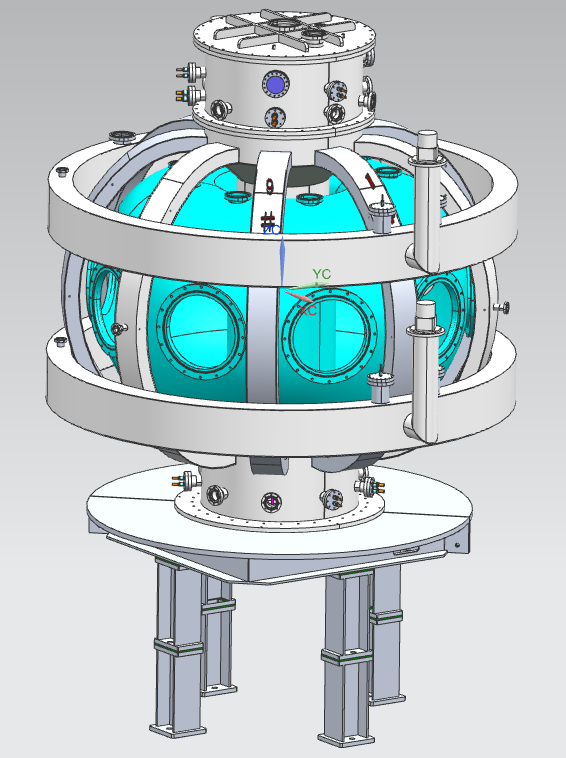
△Yixi Technology Superconducting Magnets
According to Mi Lei, superconductivity in the field of energy is to the semiconductor industry what breakthroughs in semiconductor materials were to the information revolution of the past 60 years. The upcoming energy revolution of the next 60 years will depend on advancements in superconducting materials.
Will the discovery of the ternary lutetium nitride hydride system by Langa Diaz impact the existing high-temperature superconductivity industry?
It may not be that easy. While the ternary lutetium nitride hydride system superconducting materials are impressive, they are unlikely to challenge the position of existing high-temperature superconducting materials in the short term.
Chen Rui, the CEO of Startorus Fusion believes that the most commonly used superconducting material in the field of controlled nuclear fusion is the yttrium barium copper oxide system. Chen pointed out, "Controlled nuclear fusion sets high demands on the current density and neutron radiation resistance of superconducting materials, and the yttrium barium copper oxide system exhibits excellent performance in these aspects."Chen Rui obtained his undergraduate degree in Nuclear Engineering and Technology from the Department of Engineering Physics at Tsinghua University. He later pursued further studies at the University of Sydney, earning his master's and doctoral degrees. In 2021, based on nearly 20 years of research results from the Fusion Experimental Laboratory of the Department of Engineering Physics at Tsinghua University, he co-founded the company Startorus Fusion with Associate Professor Tan Yi, focusing on commercializing fusion energy. In Chen Rui's view, the practical application of Langa Diaz's research findings is still questionable.
Jin Zhijian from Yixi Technology believes that the ternary lutetium nitride hydride system is still far from practical use. In practical applications, superconducting materials need to consider factors such as stability, electromagnetic and mechanical properties, and cost. In his opinion, the existing yttrium barium copper oxide system superconducting materials have only reached practicality after decades of research and development. Currently, it is the most feasible path for the commercialization of controlled nuclear fusion technology, and there is no need to wait for the emergence of new superconducting materials for the realization of controlled nuclear fusion.
Furthermore, regarding the conditions for achieving superconductivity in the lutetium nitride hydride system, Mi Lei pointed out, "Although it is relatively easy to achieve a pressure of 30,000 atmospheres in the laboratory, it is rather challenging in practical applications. Some articles claim that this pressure can be achieved through the material's structure itself, but this approach involves 'chemical pressure,' which is internal pressure caused by mismatched elemental structures. Therefore, whether this approach applies to this material still needs to be tested over time."
Although 10,000 atmospheres can be scientifically described as "near ambient pressure," it is still difficult to directly apply it to practical situations. Chen Rui added, "For controlled nuclear fusion devices, it is not realistic to apply 10,000 atmospheres of pressure to all positions of all magnets. It is impractical in application. If his material is truly validated, controlled nuclear fusion companies can quickly implement material upgrades by replacing it with simpler designs, and this is something both the academic and industrial communities would be glad to see. "
Therefore, Langa Diaz's experimental results have far-reaching significance for condensed matter physics, surpassing the practical application of superconductivity technology. Jin Zhijian revealed, "He has discovered a new pathway to search for high-temperature superconducting materials, and following this new pathway may lead to the discovery of high-temperature superconducting materials with lower pressure requirements."
Superconducting Materials: Guiding the Investment Direction of the Future
Langa Diaz's lutetium nitride hydride system superconducting material has achieved a nearly hundred-degree increase in the temperature of the superconducting state. If this experimental result can be reproduced by other scientists, even if it does not currently possess industrial and investment value, it is still a significant breakthrough in the field of scientific research.
"Technological breakthroughs in the United States are not achieved in a day or two. They are built upon the accumulation of countless scientists over decades, even centuries. Scientific research is a long-term process that requires patience. Sometimes, after working for 10 years without breakthroughs, we may give up halfway. But when we think about picking up the technology again after another 10 or 20 years when others have made breakthrough achievements, it will be too late." According to Mi Lei, China currently lacks the spirit of craftsmanship that requires years of skill development. People tend to focus solely on breakthroughs without being willing to invest time in cultivating their abilities in the background. This ultimately results in falling behind in the long run.
If this is the case in academia, it is even more relevant to investments.
From the perspective of investment, superconducting materials and their downstream applications in controlled nuclear fusion possess long-term commercial value, social value, and knowledge value. However, due to their distance from people's daily lives, the importance of this industry is often not widely recognized.
Nevertheless, this does not hinder the research on superconducting technology in academia. In China, numerous scientists have dedicated a decade to refining their skills in research and development. Additionally, there are entrepreneurs like Chen Rui and Jin Zhijian who are actively propelling the industrialization and commercialization of such technologies. As a pioneer in deep-tech investments, CASSTAR is wholeheartedly supporting these startups in the transformation and commercialization of cutting-edge technologies.
The mission of CASSTAR is to foster the emergence of a new technological revolution in China. Instead of solely emphasizing economic and commercial value maximization, their objective is to utilize hard technology to bring about transformative changes in the world and realize the Chinese Dream. Mi Lei emphasizes the importance of individuals who quietly cultivate their skills, stating, "Nowadays, everyone tends to focus on technological breakthroughs, but what we truly need are individuals who diligently work behind the scenes." CASSTAR aims to provide "patient capital" and has consistently pursued an investment strategy focused on early-stage investments in small-sized hard tech enterprises since its establishment.
In conclusion, the development of room-temperature superconducting technology remains the expectation of the entire society. The maturity of this technology will undoubtedly lead to a global technological revolution. Before that happens, we must maintain vigilance and reverence for the technology, and not abandon our aspirations for it.


